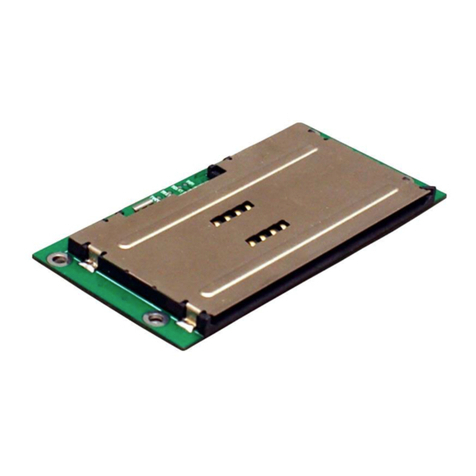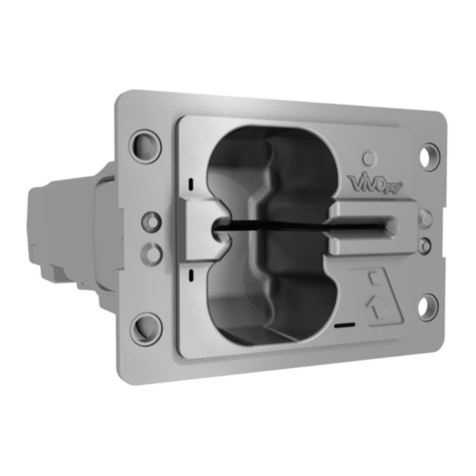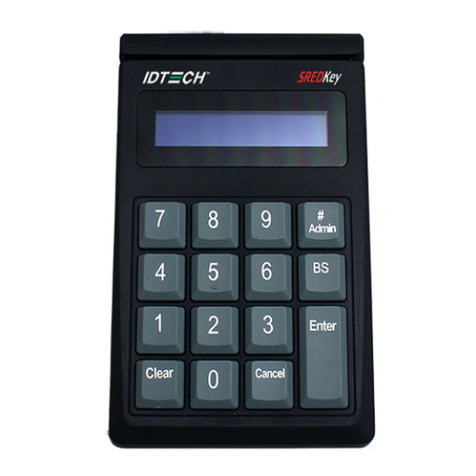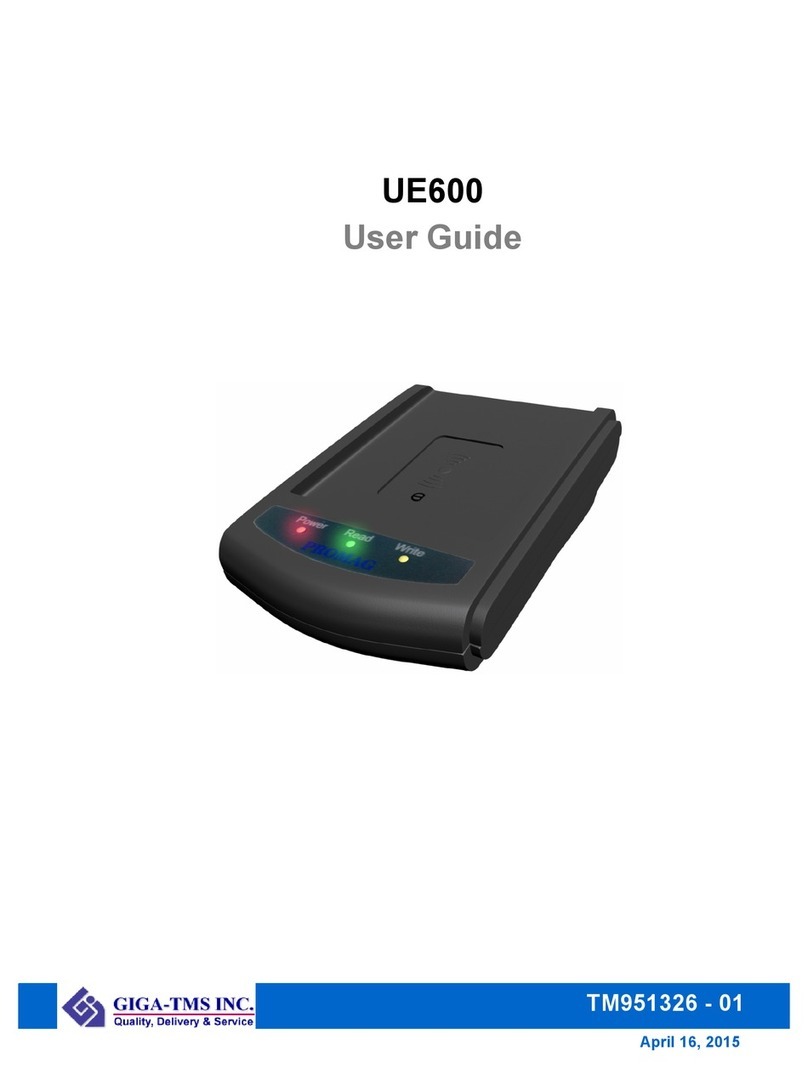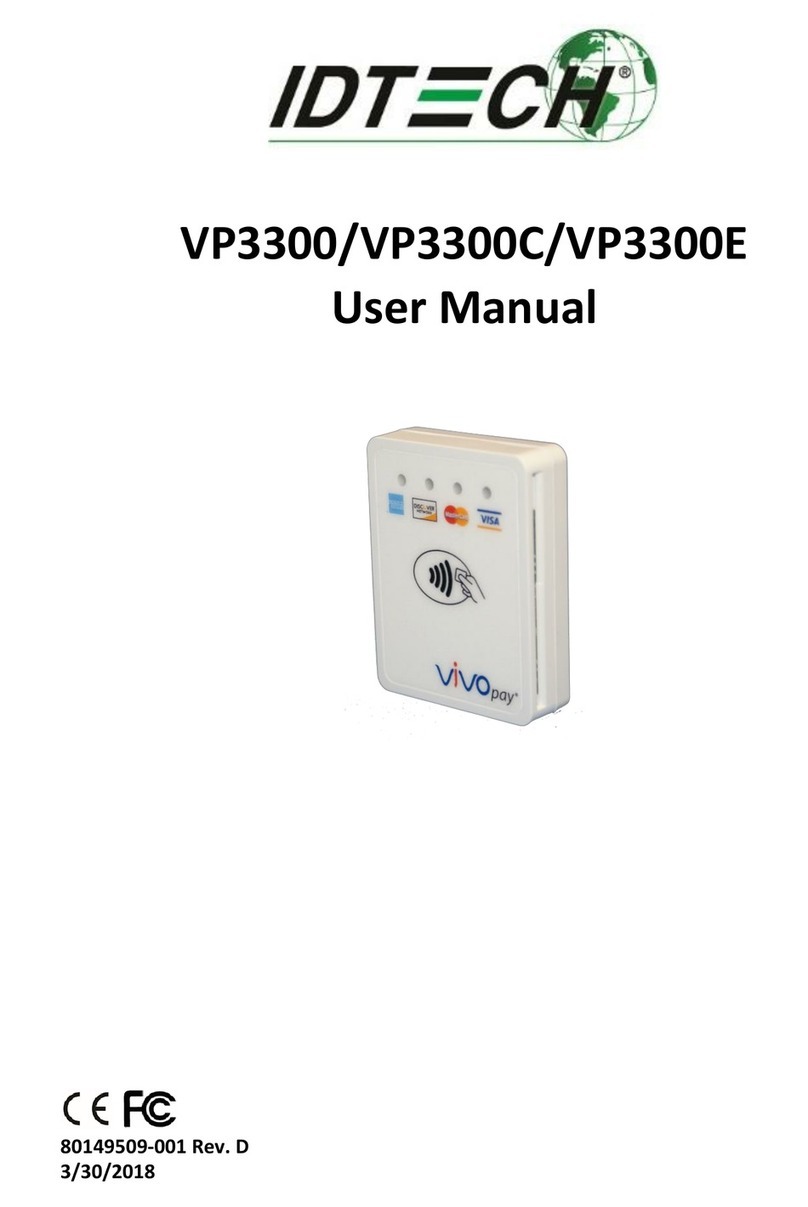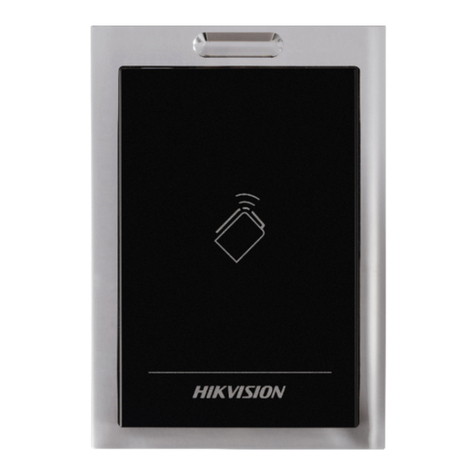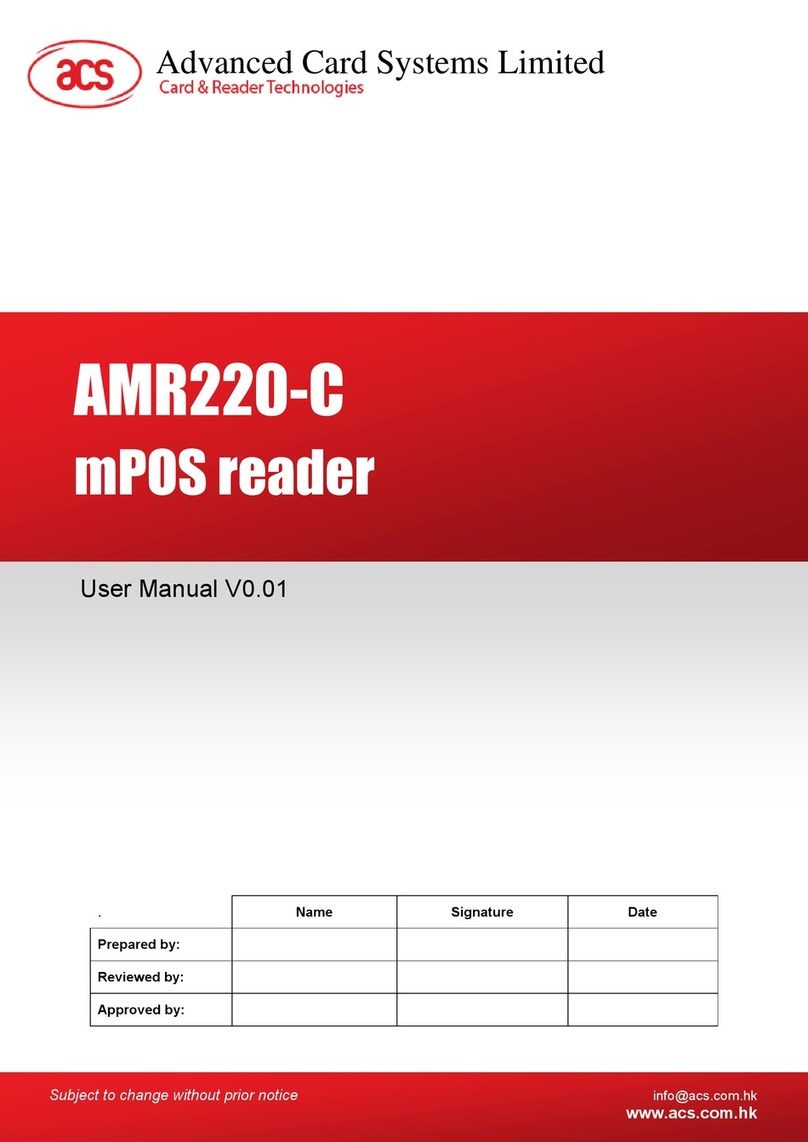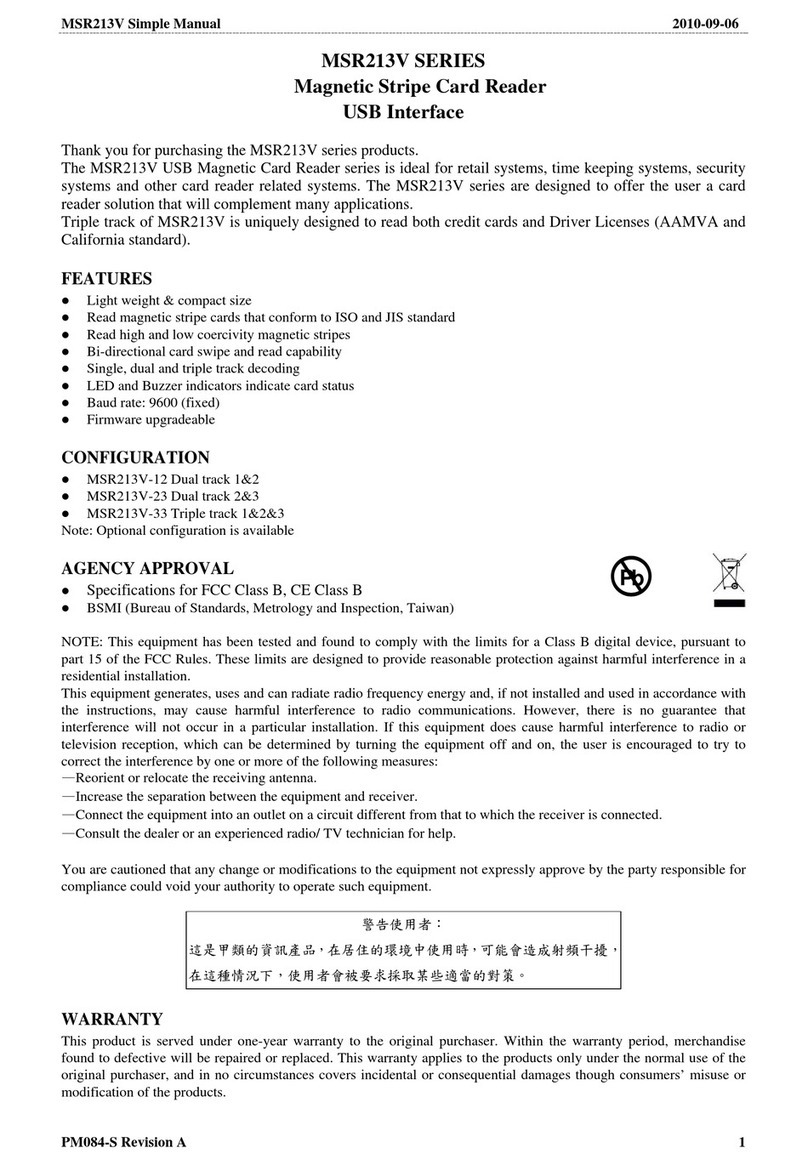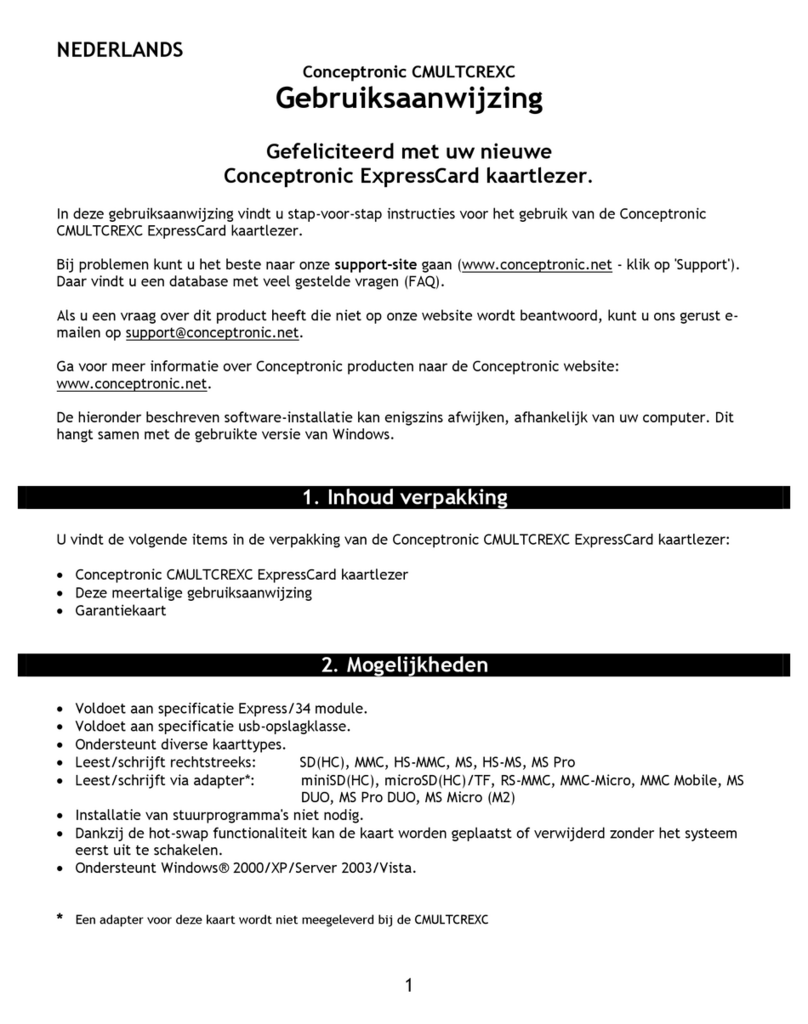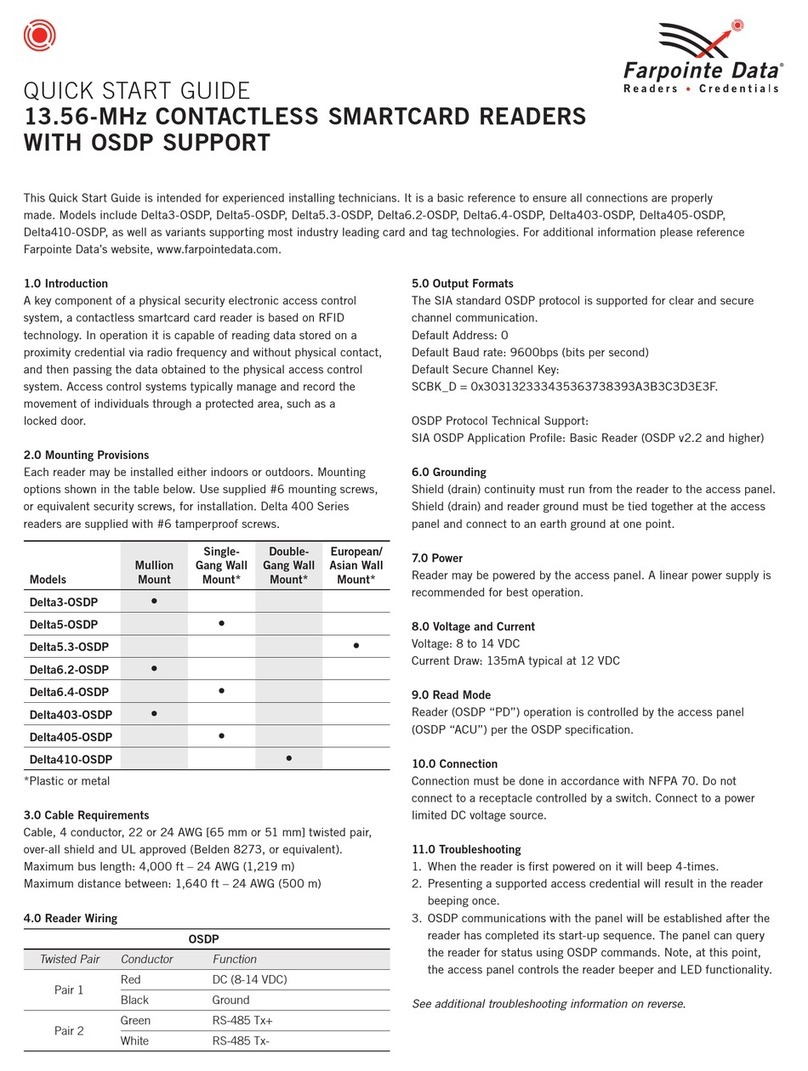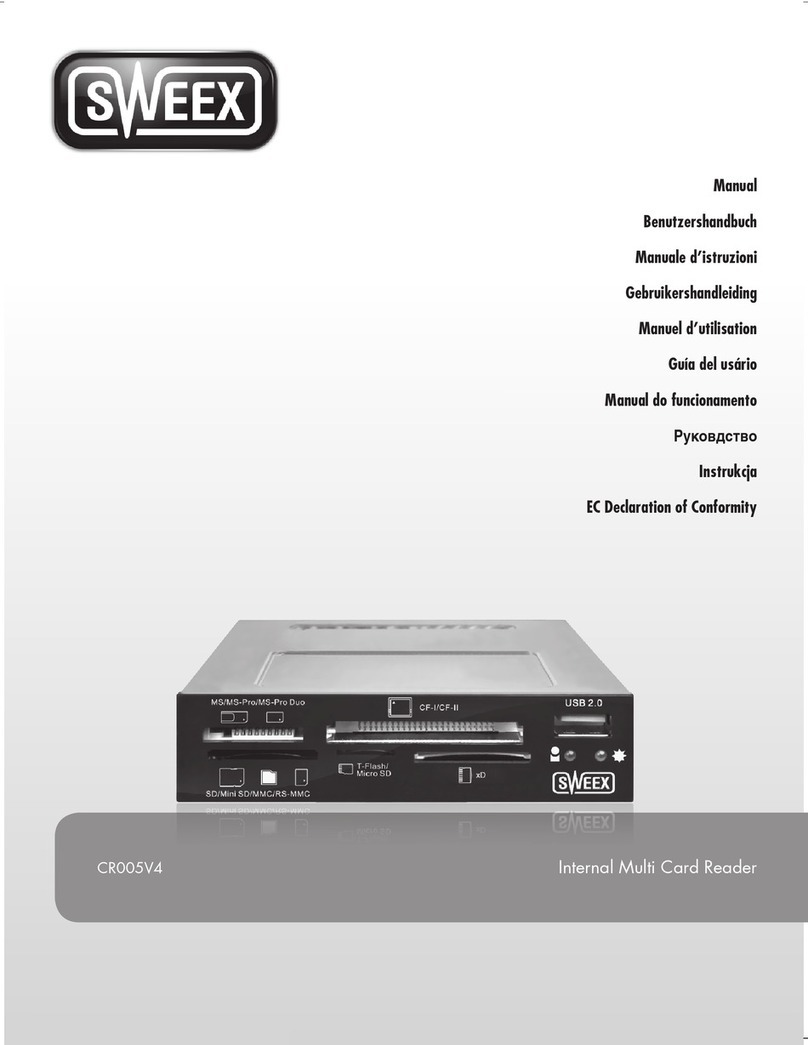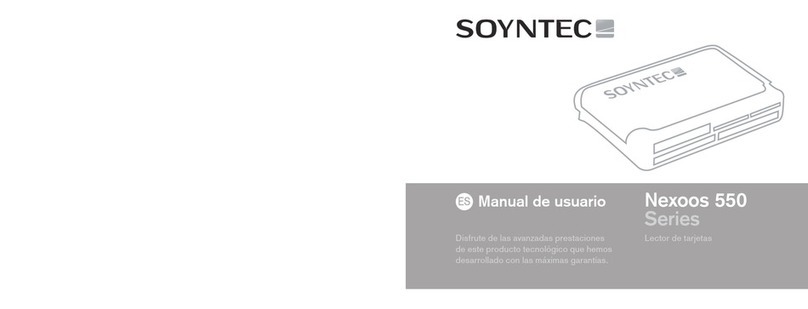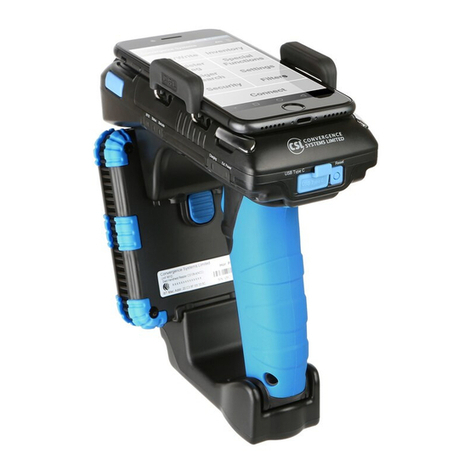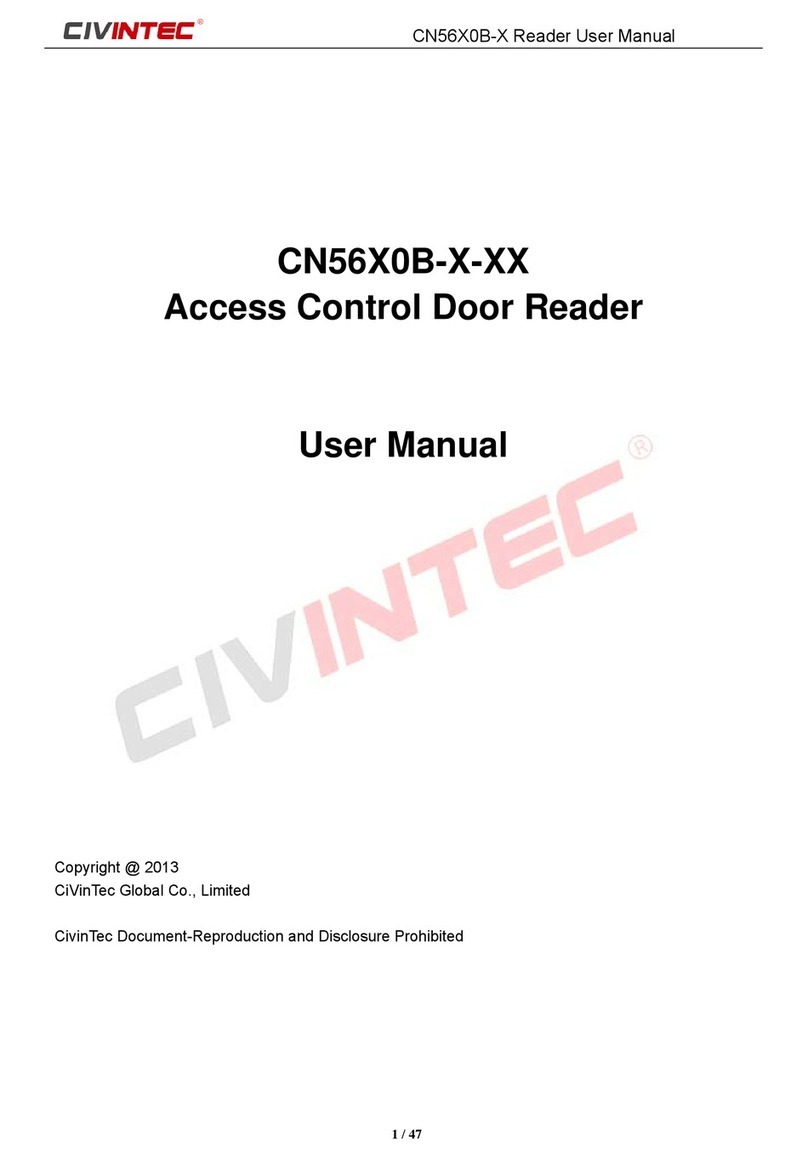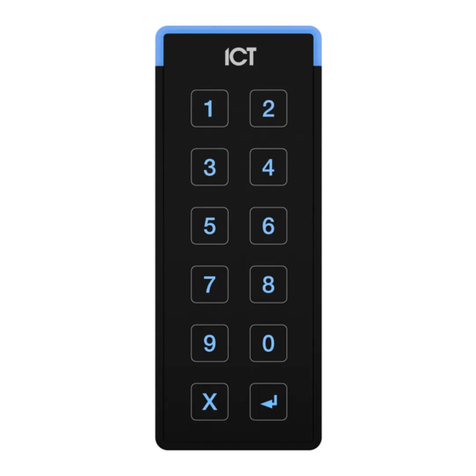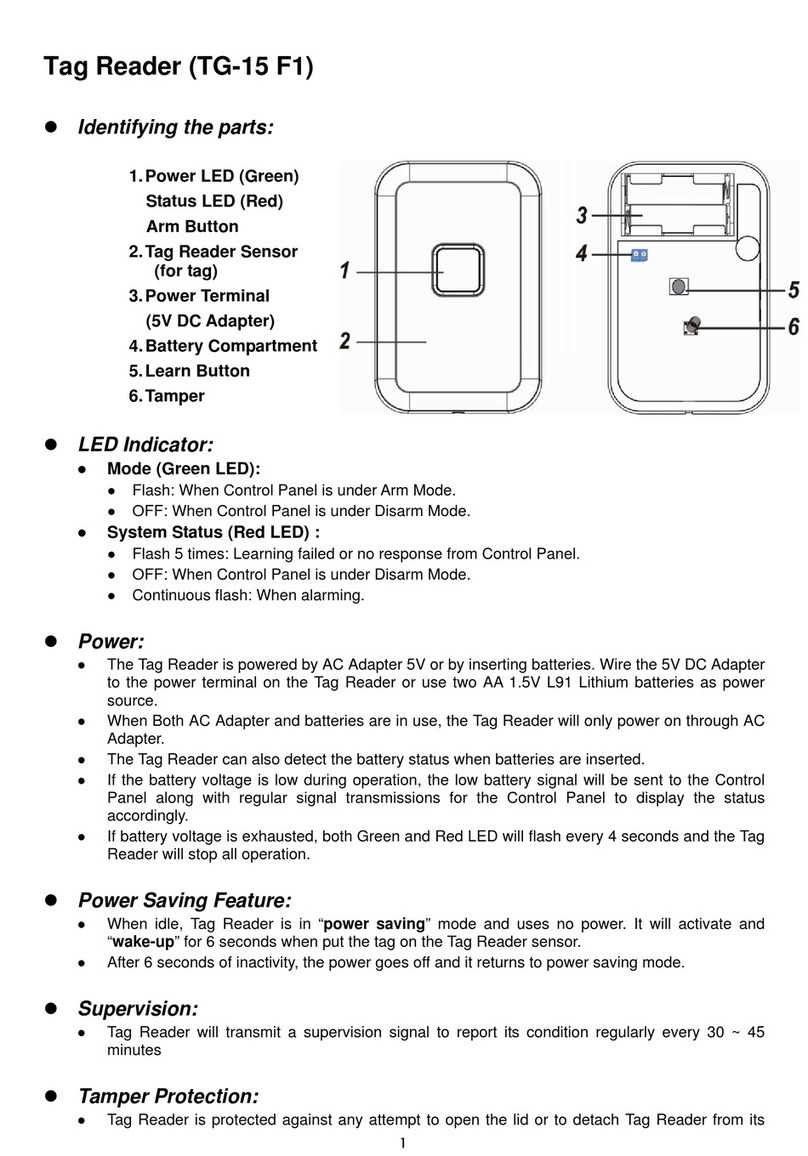Gigatek PCR210 User manual

PCR210 MANUAL
CONTENTS
1.INFORMATION
2.INTRODUCTION
3.INSTALLATION
4.DIP SWITCH BLOCK SETTINGS
5.I/O PIN ASSIGNMENT
6.COMMAND SETS
7.TRASMITTED MESSAGE FORMAT
8.SPECIFICATIONS

1.INFORMATION
Model PCR2lO: RFID Code Verifier with 20*2LCD Display
Model PCR212: RFID Code Verifier without LCD display
A. Standard Package
Main unit 1pc
This device complies with Part 15 of the FCC .
Rules. Operation is subject to the following two
conditions: (1) This device may not cause harmful
interference, and (2) this device must accept any
interference received, including interference that
may cause undesired operation.
B. Optional Items
1. Power supply adaptor DC 9V/12OV AC
2. Power supply adaptor DC 9V/230V AC
3. Proximity card
2.INTRODUCTION
PCR2lX RFID Code Verifier is so-called contactless card reader and it is based on RFID technology. So
it can read and verify RFID cards, tags and transponders contactlessly.
PCR2lX is a compact proximity reader with RS-232 interface .The product is totally compatible with the
PC AT/XT series personal computer or any computer with RS-232 interface input.
PCR210 is with 20*2 LCD display and can be used as an standalone unit to read and verify RFID codes
of the transponders without computer or can be used as an on-line unit with computer.
PCR212 has two LED indicators on the reader panel and a buzzer inside which provide the operator with
continuous status of the reader operations.
The major functions of PCR21X reader are:
A. Reads RFID transponders, such as contactless chip cards and tags
B. RS-232 interface, none parity, 8 data bits, l stop bit, baud rate 2400 ~ 19200 selectable
C. STX/ETX selectable
D. CR selectable
E. Output data length selectable
F. Data in Decimal format or in Hexadecimal format selectable
G. Generates audible beep when reading is successful
H. External power supply DC 9V, 300mA
I. Reads RF/ID cards and tags contactlessly
3.INSTALLATION
Reader can be put on the table or can be attached to any flat surface by Velcro fasteners.
A. Set function DIP switches .See DIP SWITCH SETTING.
Note: Must turn off the power of the reader when setting DIP switches.
B. Connect the RS-232 cable 9-pin connector to the proper serial COM port of the computer.
C. Plug the power adaptor into the DC jack on the unit.
Note: Make sure the power adaptor is unplugged from the power line outlet before you plug the
adaptor into the DC jack.

D. Plug the power adaptor into the power line outlet.
E. On power-up , the PCR21X shou1d produce“BEEP "sound and the Status LED on PCR212 will
illuminate GREEN to be ready to read or the LCD on PCR2lO will turn on to be ready to read .
To check the device functioning, you will need to use some terminal software. The term “terminal” refers
to the ability of the software to send, receive and display the data that is being transmitted through the
serial COM port of your computer. There are dozens of suitable programs on the market, such as
QMODEM or TELIX or PROCOMM for MS DOS.
However, one program called “HyperTerminal” is very common and comes as a part of Windows-95.
This HyperTerminal can be found in the “Accessories” folder of the “Programs” group of the “Start”
menu.
Note: The explanation below assumes that you have a basic knowledgement of Windows-95.
To test the PCR2lX functioning:
Launch the HyperTerminal.
On start-up, the Dialog box will be displayed, requesting you to type in the name of your
connection .You can give my name, for instance: TEST.
The next Dialog box will ask for telephone number. This is because the HyperTerminal also works
with modems. In your case, the telephone number is not applicable, so you don’t have to enter it .Just
select the appropriate COM port from the ‘Connect using’ drop-down list. For example, if your
PCR2lX is attached to the COM2, you should select ‘Direct to COM2’.
The next Dialog box will prompt for port settings. Here is what you should choose:
Bits per second 9600 if you select 9600 baud on PCR
Databits 8
Parity None
Stop bits 1
Flow control None
After this Dialog closes, the program is finally satisfied and the terminal screen is displayed.
Now you may try to read the proximity cards .Get a RFID card to be close to the PCR2lX unit, the
PCR21X will produce a short beep, thus indicating that the read was successful, and you should see
the registration number of the RFID card printed in the terminal window.
Note: In order to avoid multiply reading data, PCR2lX only can read the same card once when it is put within
the reading distance. So you must move the card out of the reading distance and then put it back within
the reading distance, the PCR2lX then can read the card again.
PCR210 is equipped with a Brightness Control on the back of the unit to adjust the displaying quality
of the LCD.
4.DIP SWFITCH BLOCK SETTENGS
The DIP Switch Block is located on the bottom of the unit.
The Switch Block contains switches numbered 1-8.These switches must be set while the power is off to
ensure that the switch settings are properly loaded.
Switch l & 2: To select Baud Rates
SW1 SW2 BaudRate

ON ON 2400
OFF ON 4800
ON OFF 9600 (Factory set)
OFF OFF 19200
Switch 3: To select Card Data (Card Registration Number) format:
ON ---card data in Hexadecimal format
OFF –card data in Decimal format (Factory set)
Switch 4: This is an optional switch that sends Carriage Return (CR) when set to the OFF position.
If this control characters are not desired, set this Switch to the ON position. (Factory set OFF)
Switch 5: This is an optional switch that sends the Start of Text (STX) and End of Text (ETX) framing
characters when set to the ON position .If the framing characters are not desired, set this
Switch to the OFF position. (Factory set OFF)
Switch 6, 7 & 8: To select Output Data Length.
SW6 SW7 SW8 Data Length
ON ON ON 6 digits
OFF ON ON 7
ON OFF ON 8
OFF OFF ON 9
ON ON OFF 10
OFF ON OFF 12
ON OFF OFF 13
OFF OFF OFF 14 (Factory set)
5.I/O PIN ASSIGNMENT
The following shows the standard pin assignment for the serial port in a communication environment.
9 PIN CONNECTOR (female)
Pin# Signal
Pin 2 TXD
Pin 3 RXD
Pin 5 GND
Pin 9 N.C.
Pin 1 ------
Pin 4 ------- Short Connection
Pin 6 ------
Pin 7 ------
Short Connection
Pin 8 ------
DCJACK
Center + 9 V
Outer Ground

6.COMMAND SETS
a. Show data on LCD by following sequential <ESC>--<I>--<data…>
The <data…> means that the message you want to show on LCD. The data length is no limits. After you
send <ESC>--<I>, then you can send characters by followings. If you read a card or send <ESC> again,
PCR210 will stop displaying messages.
b. Clear LCD messages by following sequential <ESC>--<C>.
7.TRANSMITTED MESSAGE FORMAT
The following shows the message transmitted after a card is read successfully.
Each ASCII character is transmitted with l Start Bit , 8 Data Bits , and l Stop Bit ,none Parity .Logic levels
conform to standard RS-232 signal levels .
< STX > <CARDDATA> <CR> <ETX>
EndofText
Character
(03H)
Optional
SetSW5toON
Carriage Return Character ( 0DH )
Optional .Set SW4 to OFF .
Card Data in ASCII
Start of Text Character ( 02H )
Optional .Set SW5 to ON .
8.SPECIFICATIONS
Power requirement
DC 9 V, 300mA
Reading distance
Up to 10 cm
Frequency

125 KHz
Indicator
- 20 * 2 LCD for PCR210
- Two LED’s for PCR212
Dimension
W134.2 x H38.4 x D65.4 mm
Operating temperature
0 ~ 55 Deg. C
Storage temperature
- 25 ~ 65 Deg. C
Humidity
5 ~ 95 % RH
Interface
RS-232 interface
Baud rate selectable: 2400, 4800, 9600, 19200
None parity
8 data bits
1 stop bit
This manual suits for next models
1
Table of contents
